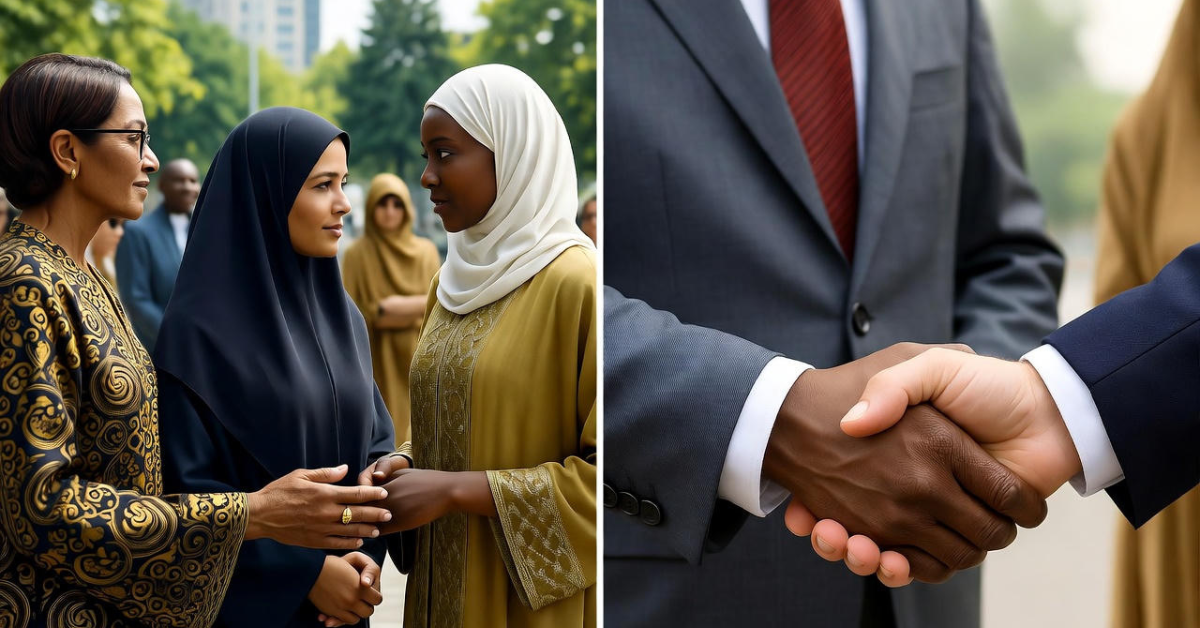Guide
Assimilation in Norway 2025: Trends, Facts & Insights

Think about moving to a new place where everything feels different. That’s what many face with assimilation in Norway. It’s about how people from other backgrounds fit into the main culture. But is it always a good thing? Let’s talk about it like we’re chatting over coffee.
Key Takeaways
- Assimilation often means giving up parts of your culture to fit in, while integration lets you keep your identity – Norway bets mostly on integration to build a strong community.
- As of January 2025, 965,113 immigrants live in Norway, which is 17.3% of the population, and the number is growing slowly, with a focus on work and refugees.
- Modern changes show that digital tools and younger generations blend cultures more easily, without losing all of the old ways.
- Mental health challenges from assimilation, like feeling lost, are common, but support programs help many find balance.
- Politics in 2025 emphasizes support and requirements for integration, with 21.4% of people having immigrant backgrounds.
What Is Assimilation?
Assimilation basically means taking on a new culture so much that you become part of it. It can be voluntary, like learning the language to make friends, or forced, like in the old days with strict rules. In Norway, we separate it from integration, where you can hold onto your roots while joining society.
Picture psychologist Piaget’s idea – it’s like how kids adapt to new things. For immigrants, it’s about language shifts and daily habits. Many minority groups experience this, and it ties into diversity today.
Imagine someone from Poland moving here. They learn Norwegian through an app and start celebrating May 17th. That’s voluntary assimilation. And did you know that globally, a language dies every two weeks because of this kind of pressure? It shows how strong the impact is.
Historical Context in Norway
Norway has a long history of assimilation, especially with indigenous people like the Sami. From the 1800s, authorities forced Norwegianization, where Sami kids had to learn Norwegian and forget their language. It caused a lot of pain, but today we’re working to fix it through diversity efforts.
Look at immigration waves – Poles are the biggest group with over 111,000 in 2025, followed by Lithuanians and Syrians. After the Ukraine war, many more arrived. Historically, Norway was more uniform, but now it’s multicultural. Compare it to Australia, where they’ve had similar struggles with indigenous people.
A real case is the Sami fight. Many lost their identity, but now the Sami culture is celebrated. It teaches us that forced assimilation hurts, while voluntary adaptation can strengthen bonds.
Assimilation vs. Integration
Assimilation often replaces your culture with the dominant one, while integration lets you mix them. In Norway, we prefer integration to avoid identity loss. It creates better community ties.
The upsides of assimilation can be quicker jobs, but the downsides include feeling lost. Integration brings benefits like diversity – companies with ethnic variety perform 35% better. The Progress Party criticized forced assimilation as harsh, and in the 2025 election, Labour won with a focus on inclusive policies.
Compare with Germany: They have stricter integration courses, while Norway uses IMDi for support. An example is the Progress Party’s program, which sees assimilation as security, but many choose integration to keep their culture alive.
Modern Trends in 2025
In 2025, immigration is steady, with 965,113 immigrants – up from 931,000 in 2024. Many come for work or as refugees, and Statistics Norway predicts around 70,000 yearly going forward. Digital tools like AI apps help with language, and climate refugees might increase in numbers. Hybrid assimilation is big – people hold multiple identities. Think of a young person from Syria using social media to blend cultures.
The trend is toward more diversity, with 21.4% immigrant background. It’s transforming society, and with the election results, integration policies are strengthened.
Effects on Mental Health
Assimilation can bring stress, like identity crises. Immigrants have higher issues than the average person, with more anxiety from discrimination. In cities, it’s worse because of the pace, while in rural areas, support is lacking.
Imagine an immigrant feeling alone – it’s common, especially with language barriers causing loneliness. Tips: Use IMDi’s programs for chats, or try mindfulness to keep balance. Second-generation folks struggle too, but studies show it gets better over time. Ipsos surveys show rising fear, but also support for diversity. Seek help early to avoid bigger problems.
Generational Effects
Second generation often develops hybrid identities – they’re Norwegian but hold onto roots. That’s great, but challenges like ethnic enclaves can isolate. Take Somali families: Third generation fits in better, but needs support. Tips: Join sports or school clubs to meet people. For spouse imports, some rules help integration. Stats show 31% of Ukrainians in jobs after one year, with a goal of 83% by 2035. It shows progress across generations.
Politics and Future Outlook
Meld. St. 17 from 2024 sets requirements like language and work for integration. In 2025, after the election, Labour continues with support. The future has hybrid models and DEIB in workplaces – diversity boosts the economy. Compare assimilation seen as “invasion” in debates with integration as a win. Employment dipped slightly to 67.7% in 2024, but the number of employed rose. Example: Ukrainians get temporary help. With aging immigrants, we need more focus on health.
FAQ
- What’s the difference between assimilation and integration? Assimilation means fully adapting to the majority culture, often losing your own identity. Integration lets you keep your culture while joining society. Norway prioritizes integration for diversity.
- Is assimilation voluntary in Norway? Often yes, through language and work, but historically forced (like with the Sami). Modern policies support choices with IMDi to help avoid pressure.
- How does assimilation affect mental health? It can cause identity crises and stress. Studies show higher anxiety among minorities; seek support through healthcare or communities to balance cultures.
- What are the immigration trends in Norway in 2025? Net immigration rose in 2023; 965,113 immigrants (17.3%) in 2025. Projections: 70,000 yearly to 2100, with a focus on work integration.
- Do immigrants need to assimilate for employment? Not fully, but language and culture help. Employment rate: 67.7% in 2024; goal 83% by 2035 through training.
- What about assimilation in the second generation? They often develop hybrid identities, but challenges like ethnic enclaves persist. Tip: Join education and local groups for better adaptation.
Use these insights to navigate assimilation – join Norwegian society actively while protecting your cultural heritage for a stronger future.
